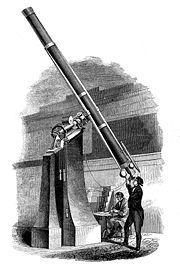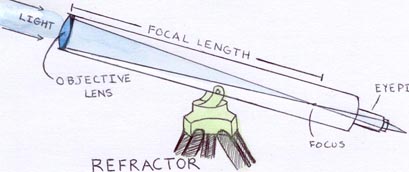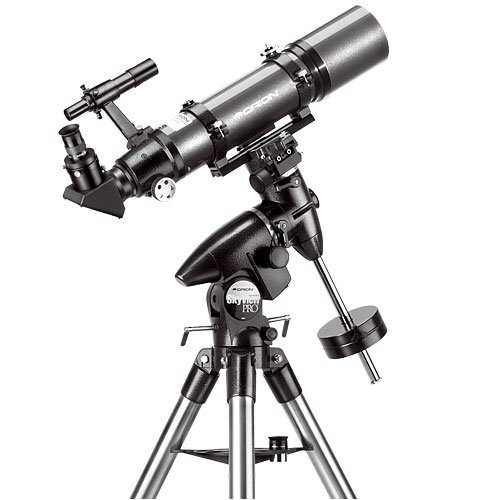If you ask someone to describe or draw a telescope, nine times out of ten it will be a refractor.
The refractor telescope is quite possibly the most common or easily recognized telescope. It is a very simple design, which has been around for hundreds of years.
The history of the refractor is that it was first invented in the Netherlands in 1608, and is credited to 3 individuals; Hans Lippershey, Zacharias Janssen – spectacle-makers and Jacob Metius.
In 1609 Galileo Galilei heard about the refracting telescope and made his own design, publically announcing his invention and further developing it through extensive experimentation. Galileo’s friend Johannes Kepler further experimented with the design, introducing convex lenses at both ends, improving the operation of the telescope.
Many advances were made and the refracting telescope became the primary instrument for astronomical observations, but there was one problem; they were huge and some were many tens of feet long!
But now, after more than 400 years and — luckily — through advances in know-how and technology, the refractor has become much more powerful and compact than some of the behemoths in the early days.
Refractors or refracting telescopes employ a simple optical system comprising of a hollow tube with a large primary or “objective lens” at one end, which refracts light collected by the objective lens and bends light rays to make them converge at a focal point.
Light waves which enter at an angle converge on the focal plane. It is the combination of both which form an image that is further refracted and magnified by a secondary lens which is actually the eyepiece. Different eyepieces give different magnifications.
The larger the size of the objective or primary lens = more light gathered. So a 6 inch refractor gathers more light than a 2 inch one. This means more detail can be seen.
There are two main types of refractor telescopes: “Chromatic” – entry level and upwards with 2 lens elements and “Apochromatic” – premium, advanced and expert level telescopes with 3 or more very high quality lens elements with exotic mixes of materials.
Chromatic refractor telescopes are particularly good for observing bright objects such as the moon, planets and resolving things like double stars, but many astronomers who image deep sky and other objects use very high quality apochromatic refractors, due to their superior optics.
Refractor telescopes are very low maintenance due to being a sealed system and it is a simple case of setup and enjoy, without the fiddling lengthy setup times you may get with other telescopes.
Refractors give clean and crisp views due to the sealed nature, unlike other telescopes like Newtonians which are subject to cooling and air turbulence issues.
Due to their small size they are very portable and can also be used for terrestrial observations the same as binoculars, which are basically two refractors bolted together.




